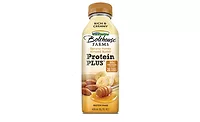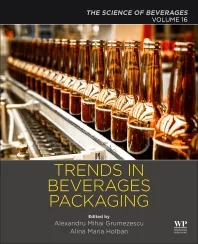Aseptic cartons, pouches, bag-in-box appeal to clean-label trends
Multi-serve pouches, BIB gain footing in on-premise channel



In its March report titled “Pouches,” Cleveland-based The Freedonia Group indicates that the U.S. pouch market will grow 4.4 percent a year through 2020 to $10.1 billion, primarily driven by the introduction of pouches in new markets and the integration of high-value features, such as re-sealable closures and spouts, in more mature markets.
Food and beverage markets accounted for 80 percent of the total pouch market in 2015 and will continue to drive this market going forward, the research firm states.
Yet, pouches are not the only packaging format gaining attention within the beverage industry. Aseptic cartons and bag-in-a-box (BIB) formats also are proliferating.
In August, Dublin-based Research and Markets released a “North America Aseptic Packaging Market – Forecasts from 2016-2021” report that states that the North American aseptic packaging market is expected to grow at a compound annual growth rate of 9.16 percent during 2016-2021 to reach a value of nearly $12 billion.
Let’s talk money
As the idiom goes, “money talks.” Beverage manufacturers accrue several costs when it comes to packaging, including labeling, shipping and storage, but experts note that pouches, cartons and BIB packaging formats often can save on these related expenses.
“Cartons are highly efficient for beverage manufacturers,” explains Eliseo Barcas, vice president of sales for Denton, Texas-based Tetra Pak U.S. “They ship to the manufacturing facility flat on rolls, which eliminates the need to store empty containers, and they are lightweight and compact, making them more efficient to transport. Their shape also makes them space-savers in stock rooms and on store shelves. And, since they don’t require refrigeration, they save energy and money during transport and storage.”
Esther Palevsky, senior industry analyst at The Freedonia Group, also notes that shipping costs and fuel use can be deflated with the use of carton packaging.
Multi-serve pouches also benefit from reduced shipping and storage costs, says Dave Moynihan, president of Middlesex, N.Y.-based AstraPouch. “[W]hat would be the equivalent to a pallet worth of glass, I can ship it in a two-by-two-by-three-inch box FedEx for $30,” he explains. “That makes … the reality of using pouches economic from a supply chain standpoint.”
Vice President of Sales for Jackson, Mo.-based Mondi Jackson’s Consumer Goods Packaging division Allen Ward echoes similar sentiments. “Many beverage manufacturers are turning to pouches for sustainability gains,” he says. “Pouches weigh less than glass bottles, and you can fit many more pouches than bottles on a pallet or truck. That translates to lower transportation costs and [carbon dioxide] (CO2) emissions.”
While cartons can help reduce various costs related to single-serve and consumer purchases, experts note that BIB and pouch packaging are benefiting on-premise locations, especially in the wine segment, Moynihan says.
Freedonia’s Palevsky also notes this growth within the on-premise channel. “Bag-in-box (and aseptic carton) packaging is seeing increased demand for foodservice beverage mixes, both alcoholic and non-alcoholic,” she says. “A benefit in these uses is that mix products can be stored at ambient temperatures until needed. Refrigerator space is often limited in bar areas and behind the counters of coffee shops and other quick-service restaurants. This allows unopened products to be stored at room temperature until needed.”
Freedonia’s Mike Richardson, senior industry analyst, adds: “[B]ag-in-box packaging is convenient for back-of-the-house restaurant uses. Wine by the glass is the most obvious example, but restaurants that use wines (as in risotto) and fortified wines (as in chicken marsala) in their recipes take advantage of lower costs and ease of use.”
AstraPouch’s Moynihan adds that consumers have grown more accepting of products, like wine, that are packaged in BIB and pouch formats. With higher-end wines being released in BIB formats, consumers are embracing quality wine at a lower price-point due to the less-expensive packaging, he says.
BIB and pouches also become less expensive as the size of the packaging increases, making the format more economical for the multi-serve market, he adds.
Mondi’s Ward also notes that pouches increasingly are offering value-added attributes, making them more cost-effective for the manufacturer and desired by the consumer, thus driving profits.
“Value-added features that increase convenience are spurring the popularity of pouches,” he says, citing a 2016 Freedonia Group study. “Today’s beverage pouches are equipped with a vast array of convenience features. Small-spouted pouches, for example, come with fitments that allow easy opening and secure reclosing, while larger pouches often have built-in handles for easy carrying. Both can have a variety of different closures and spouts.”
Clean protection
As with any business decision, the proliferation of these packaging formats also is driven by consumer demand, experts say. Increased desire for better-for-you products has left consumers expecting complementary clean-label packaging.
“Today’s consumers are informed buyers. They increasingly scrutinize a product’s ingredients before they buy, so we are seeing a growing demand for items made without added chemicals or preservatives,” Tetra Pak’s Barcas explains. “Aseptic packaging is a great fit for this clean-label trend since it protects the product inside without any added preservatives.”
Erin Reynolds, marketing director for Memphis, Tenn.-based Evergreen Packaging, echoes similar sentiments. She notes that in St. Petersburg, Fla.-based EcoFocus Worldwide’s 2016 EcoFocus Trend study, half of consumers surveyed believe that cartons are a good fit for healthy beverages. She adds that 72 percent of consumers said they want packaging that keeps products fresh without the use of preservatives and 70 percent said that products with healthier ingredient lists should use healthier packaging materials as well.
“They believe cartons are less likely than plastic to leave harmful chemicals in their beverages,” she says.
The aseptic filling process also offers clean-label benefits, Freedonia’s Palevsky says. “The rapid-flash heating and cooling process employed with aseptic cartons is gentler than the longer heating time of canning and allows products to be sterilized without significant loss of nutrients, taste and texture,” she explains. “The shorter heating time aligns well with consumer trends favoring foods that are less processed.”
On the other hand, AstraPouch’s Moynihan notes that BIB and pouch formats offer the benefit of protecting products that are vulnerable to the effects of oxygen.
More than recyclability
Also driving the use of these packaging formats within the beverage industry is their lower overall impact on the environment. According to Evergreen’s Reynolds, citing the EcoFocus Trend study, consumers are looking beyond whether a package simply is recyclable, and, instead, are looking to its overall carbon footprint.
“According to the 2016 EcoFocus trend study, 65 percent of consumers say it is important to choose beverages that are packaged responsibly, up from 59 percent in 2013,” she explains. “For 64 percent of consumers, this means packaging that is labeled as recyclable. For 59 percent of consumers, this means packaging that is made with renewable materials.
“To meet these needs, FreshHouse gable top cartons provide consumers with a sought-after sustainable packaging option that, just like a house, has four walls and a roof that helps protect everything inside,” she continues. “This smart packaging helps ensure product freshness by protecting flavor, nutrients and vitamins.”
Reynolds highlights that all of Evergreen’s cartons are made of more than 70 percent paper, which comes from trees where responsible forestry practices are used and growth exceeds harvest. “Cartons are also recyclable for over 58 percent of U.S. households,” she adds.
Sixty-one percent of consumers say that brands marketing healthy beverages need to do a better job of offering alternatives to plastic packaging, she adds.
“This trend is growing from the fact that consumers are increasingly making a connection between their personal health and eco-friendly choices,” Reynolds explains. “With a majority of grocery shoppers actively looking for sustainable options — environmental considerations have now become a criteria in consumers’ decisions of whether or not to purchase a product.”
Tetra Pak’s Barcas adds: “Many of the same consumers looking for clean labels also pay attention to the environmental footprint of the packaging their products come in. This translates to a more holistic look at sustainability that expands beyond recycling to take into account climate implications, resource scarcity and other environmental factors. Tetra Pak aseptic cartons are recyclable and made mainly from a renewable source — wood fiber from forests where trees keep on growing.
“… Their low carbon footprint resonates with consumers who demand environmentally responsible products,” he continues. “… Today, packages need to be more than recyclable. Consumers are paying attention to the overall impact of their purchases, paving the way for packaging made from renewable materials to make a big impact.”
Tetra Pak offers food and beverage cartons made from trees harvested from well-managed forests. The company also has made strides in the use of bio-based plastics that are made from renewable materials like sugarcane, Barcas says.
AstraPouch’s Moynihan notes that when you take the production and shipping aspects of glass into account, pouches leave a smaller carbon footprint.
He also says that pouches, which are seeing increasing recyclability rates, offer an ease of recycling compared with BIB, as consumers are not required to separate the different materials.
“[U]nless you, as the consumer, separate it in the blue bin, it doesn’t really get recycled, because the recycle [operators] … don’t have time to separate the two dissimilar materials on the sorting line,” Moynihan explains. BI
Looking for a reprint of this article?
From high-res PDFs to custom plaques, order your copy today!






